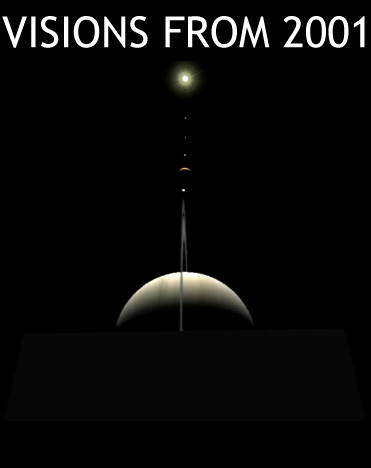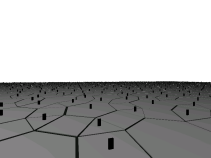
Introduction
In 1948, Arthur C. Clark wrote a short story titled "The Sentinel", about a group of astronauts discovering a translucent tetrahedron, built by aliens, on the Moon. That story was subsequently used as a base for a full-length novel: 2001: a Space Odyssey, that was released in 1968.
While Arthur C. Clark was working on the novel, he was also collaborating with Stanley Kubrick, who was directing a movie based on the novel itself.
The movie ended up being released just before the novel, without many parts that did appear in the novel, simply because 1960s special effects technology was not advanced enough to create images of it. For example: in the novel, the Discovery uses Jupiter's gravity to reach Saturn, which is its final destination. In the movie, instead, the Discovery's final destination is Jupiter itself, because Douglas Trumbull was incapable to create realistic visuals of Saturn's rings. (Douglas Trumbull eventually succeeded in bringing Saturn to the big screen with his movie Silent Running, which, ironically enough, was released in Italy as 2002: the Second Odyssey).
When I read the 2001 novel as a kid, I could see in my mind the astonishing imagery of the inside of Jupiter being filmed by a probe, of the moons of Saturn, of the TMA-2 monolith on the surface of Iapetus, of the Grand Central Station artificial world with thousands of monoliths, of the red giant with a derelict alien space station orbiting it...
When I finally saw the movie, I was extremely disappointed to discover that none of those scenes had been shot. For years I have wondered how they would look like on a screen, until I finally decided to bring them to the screen myself, through CGI.
Here, you will find a series of HD animations, for the cinematic experience, as well as several VRML worlds, to let anyone freely explore those locations that until now could only be imagined, but now, for the first time ever, can actually be seen.
Animations
Whenever a new animation is released, it will appear in this section. Animations will not be released in chronological order, but will be sorted into chronological order here (meaning that a scene that takes place earlier in the story will be placed above a scene that takes place later).
Soundtrack:
CASSINI - by Scott Buckley. Licensed under a Creative Commons Attribution 4.0 International License.
GENESIS - by Scott Buckley. Licensed under a Creative Commons Attribution 4.0 International License.
VRML environments
These environments require a VRML browser plugin to be displayed. Download Cortona 3D Viewer for Windows (this supports Direct3D9 and stereoscopy) or OpenVRML for Linux, FreeBSD and OSX.
To explore them online, left click on the screenshots. To download them and explore them offline, right click on the screenshot and choose "Save destination as".
If you are on a mobile device with Android, you will need to download VRML View 3D to view VRML environments.
to view VRML environments.
 Grand Central Station
Grand Central Station |
 Alien space station
Alien space station |
 Surface of red giant
Surface of red giant |
VRML is still a great way to create 3D content for the web that can be experienced on computers or Android-based mobile devices. With a head-mounted display and stereoscopic drivers, it can even be experienced in virtual reality!
Would you like to know more about VRML or create 3D web content? These books may be exactly what you are looking for.






